-
Car Reviews
- Car News
-
Car Comparisons
Latest comparisons
- Chasing Deals
Big, brash and bloody brilliant. Toyota’s right-hook Tundra takes the brand’s ute game to a whole new level in Australia
Like it or not, the ute world is changing in Australia.
Previously reserved for the likes of pastoralists and horse trainers teaming luxury with heavy-haulage requirements, American-sized pick-ups like the Toyota Tundra are an increasingly common sight on Australian roads as punters seek more from their dual-cab workhorses.
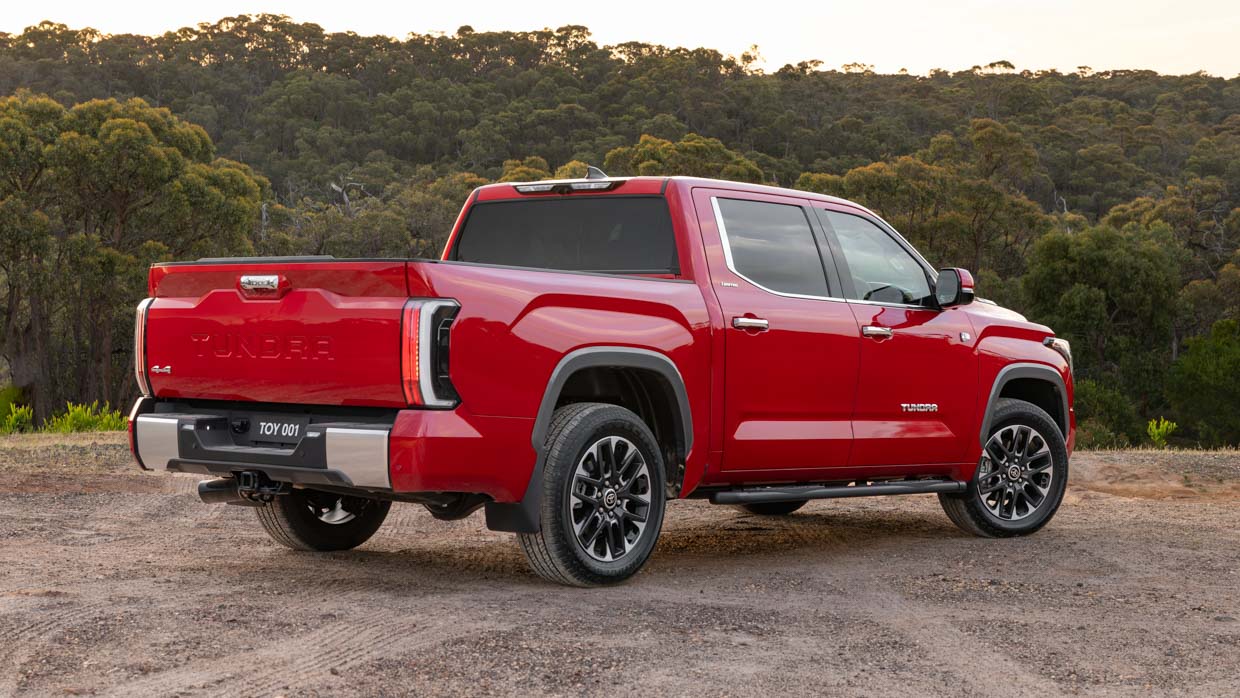
Toyota is late to the full-size pickup segment in Australia, with the Chevrolet Silverado and particularly the Ram 1500 earlier to land locally. The big Ram and Chevy trucks sold 5922 and 2260 units apiece in 2023 indicating a maturing full-size ute space.
Late in 2023, Ford followed suit with the F-150, though at the time of writing deliveries of this model have temporarily paused, due to an unexplained issue related to the turbocharger. Another potential issue, related to the steering rack, has also since been identified.
It’s a nightmare situation for the Blue Oval brand and perhaps it goes someway to help explain why Toyota has been so head-scratchingly wary of signing on the dotted line and declaring the Tundra ‘on sale’.
Instead, classic Toyota conservatism prevails. The Tundra-for-Australia program took years to get off the ground and 280 of the first 300-strong batch to arrive will be leased to hand-picked customers charged with evaluating the American pick-ups in the real world.
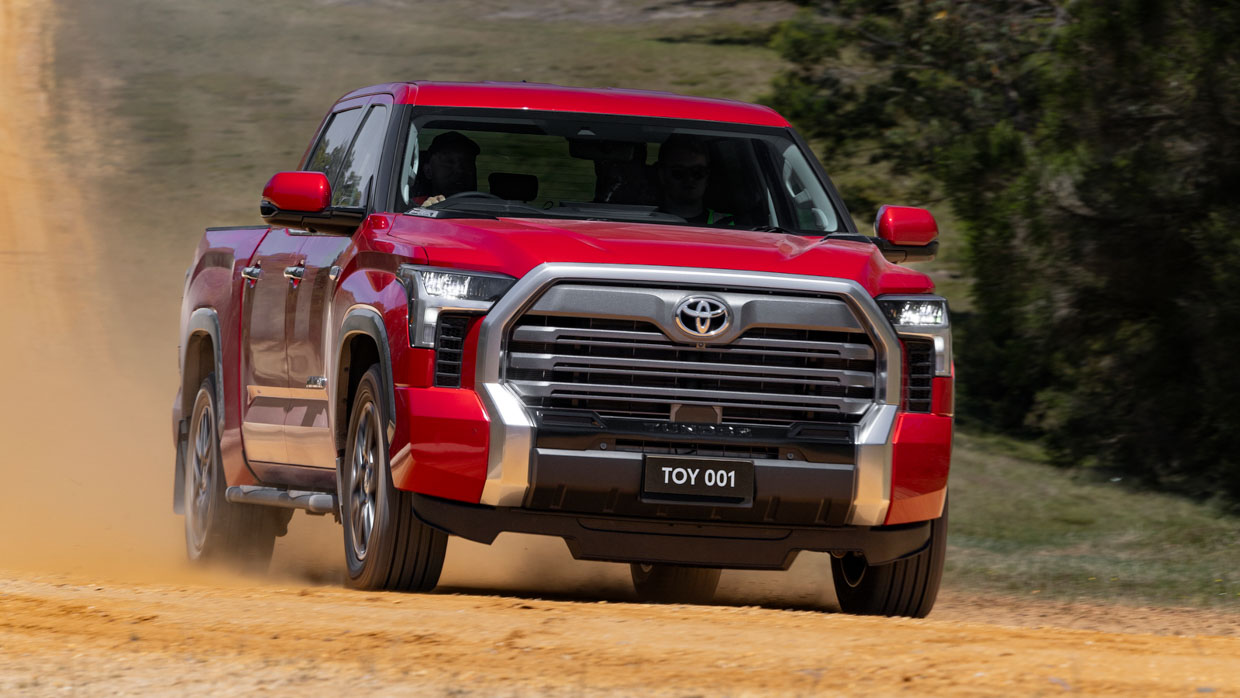
The final 20 units will be retained internally by Toyota Australia for testing purposes.
Leases underpinning the ‘Tundra Insider Program’ will run for at least 12 months – with the possibility of extension if need be. The testing scheme will produce results showing Toyota whether the big rig holds up properly in Aussie conditions – instructing the brand on whether it should sell the vehicle to the public.
Toyota says the body-on-frame TNGA-F platform, shared with the Land Cruiser 300 Series, was the key to approving the official left- to right-hand-drive conversion process. It’s the first time such a reassembly process has been allowed by the Toyota mothership.
Significant modification of existing parts and even fabrication of new components has been required, but Toyota has also been able to pull from the 300 Series parts bin to complete the conversion to original equipment (OE) standards and requirements as well.
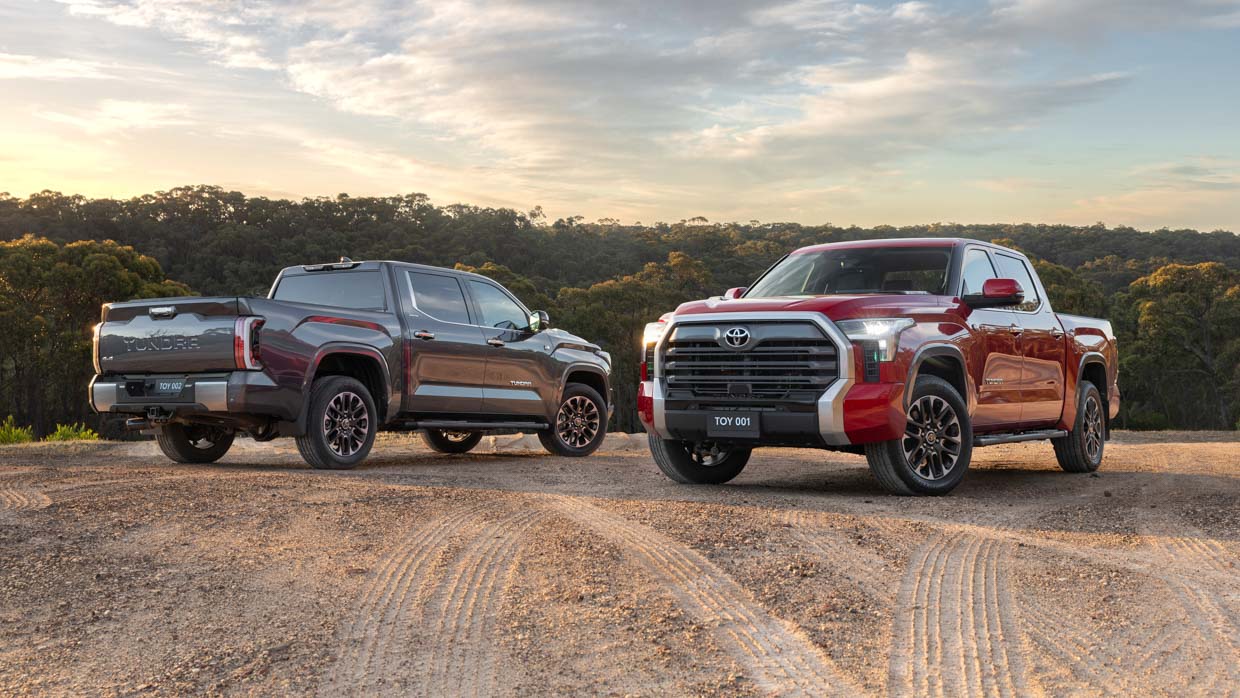
That mission, by the way, is to have the Tundra to appear both from a glance, and under the surface, to be as if it was made in right-hand-drive straight from the factory floor.
Toyota has partnered with Walkinshaw Automotive Group to both engineer and convert the Tundras to RHD. It seems like a wise choice, given the latter group’s experience with the aforementioned Ram and Chevrolet pickups.
To showcase how well all this came together, Chasing Cars was invited to sample the Tundra at the well-regarded Australian Automotive Research Centre proving ground in Victoria.
All 300 of the Tundra units imported to Australia and reassembled locally are examples of the luxurious Limited spec sold in the US. If the Tundra is eventually put on sale, final specs might differ – but for now, the testers include the following specifications:
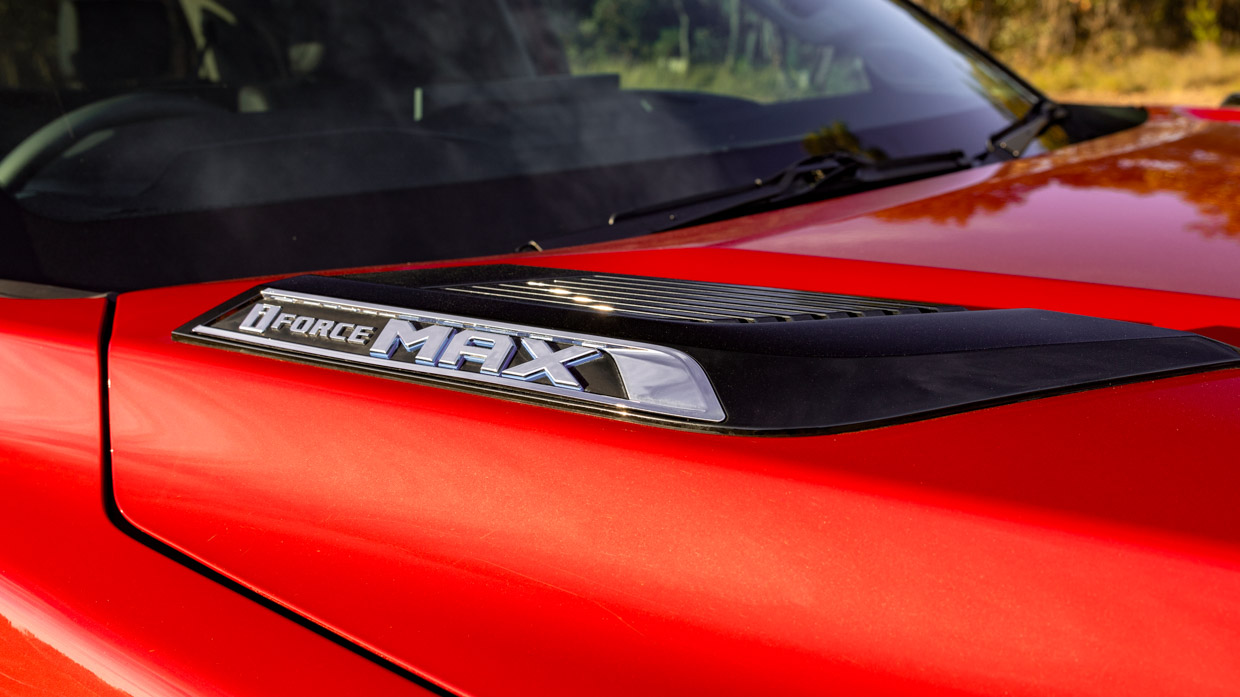
Buyers can opt for a heavier tow kit with the (required by law) 70mm ball if they are seeking to tow 4.5 tonnes.
Furthermore, Toyota says it is developing genuine factory accessories for the Tundra but the list is not finalised or expected to be exhaustive.
My career as a motoring journalist has included many hours behind the wheel of midsize utes like the Ford Ranger and Toyota’s own Hilux.
It is that experience that I brought to the local Australian drive of the Tundra – and the difference was immediately palpable.
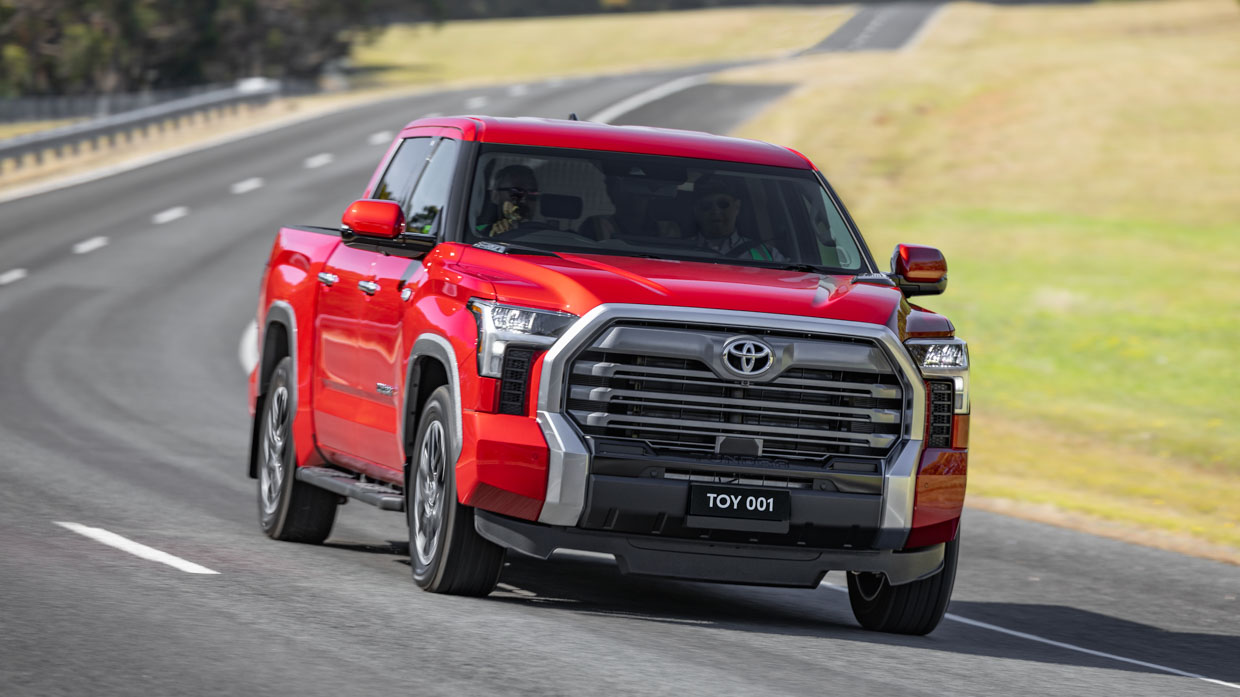
It starts with size: the Tundra is noticeably bigger than the Hilux but if you are already used to parking a ute, it doesn’t take too long to get used to the more cumbersome scale of the Tundra.
At 5955mm long, the Tundra is around 600mm longer than a double-cab Hilux, which will make for some frustrating moments in tight multi-storey car parks, though out on the open road the difference is a positive one.
At highway speeds the Tundra wafts along the road with its wide 1737mm track and long wheelbase giving it the stability and serenity to take bumpy roads in its stride.
It’s also far more comfortable than the Thai-built utes Aussies have become accustomed to, and nicer than a Prado, too – the Tundra feels fairly comparable to a 300 Series.
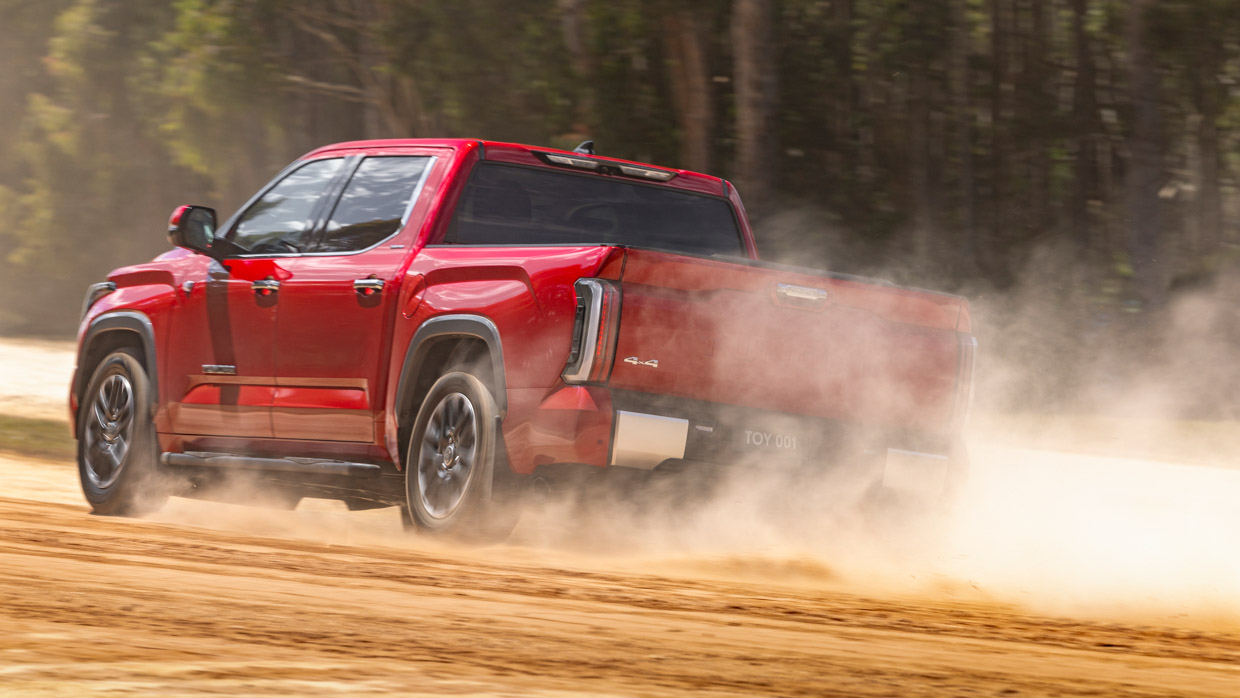
This is in large part owing to the suspension, with the jump to the third-generation ushering in a multi-link, coil-sprung setup on the rear axle in favour of the rough-riding leaves. The front is a traditional double-wishbone setup.
We had a chance to sample the Tundra not just on the highway but also some windy backroads, and the vehicle was surprisingly nimble though its size and mammoth kerb weight at 2778kg needs to be treated with respect.
In the US, the Tundra is available with a choice of two 290kW/650Nm 3.5-litre twin-turbo petrol V6 engines, with the most powerful working in conjunction with a 36kW/250Nm electric motor sandwiched between the engine and 10-speed automatic transmission.
With a total output of 326kW and 790Nm as tested here, this hybrid system – referred to as i-Force Max – was the first to be fitted to a Toyota body-on-frame vehicle, though the latter hybrid format is also used in the US-market Sequoia large SUV and in the Tacoma midsize ute, paired with a smaller four-cylinder engine.
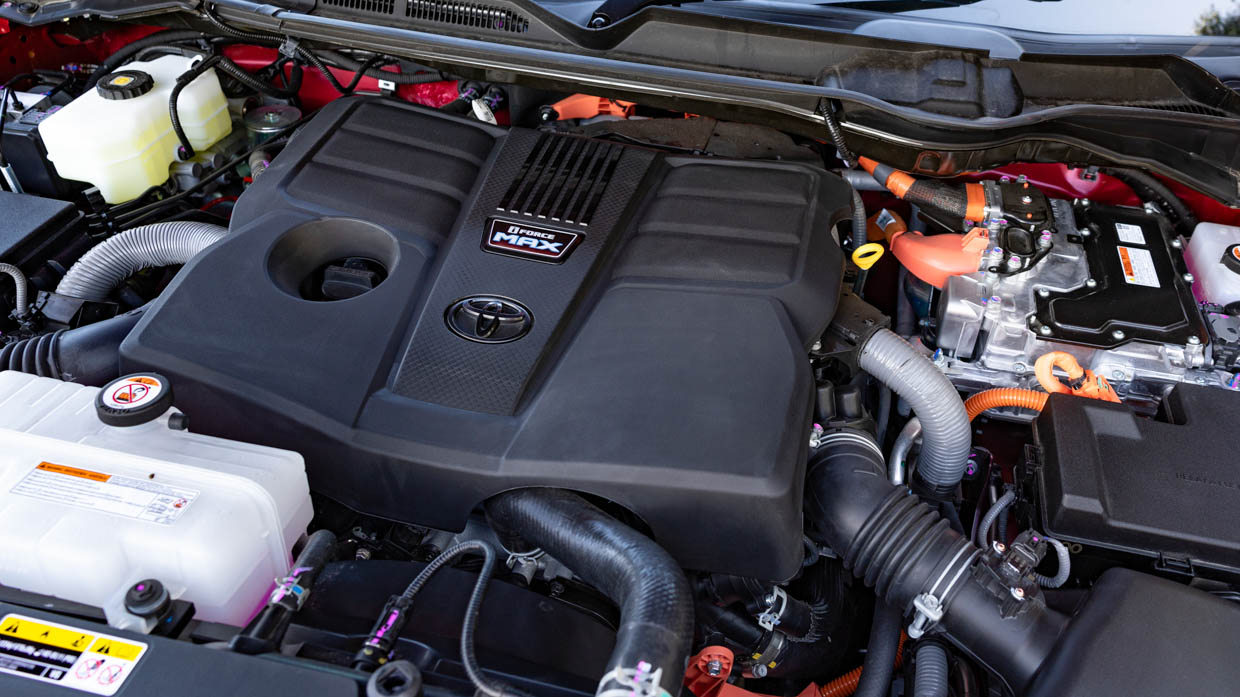
It’s expected that we will eventually see versions of Toyota’s i-Force Max system in the 300 Series and next-gen Hilux, with the incoming Prado already under consideration to adopt the petrol-electric powertrain.
Despite the similarities in the platform, there are currently no plans to offer the diesel V6 from the 300 Series in the Tundra, as Toyota says there isn’t the volume to support the extent of re-engineering required to make a diesel Tundra a reality.
Good news, then, that the i-Force Max system was impressive in our initial testing, in both performance and refinement terms.
On the highway the noise of the wind passing is more noticeable than the engine itself and yet when it’s revved out it sounds quite fierce – as is its straight-line performance.
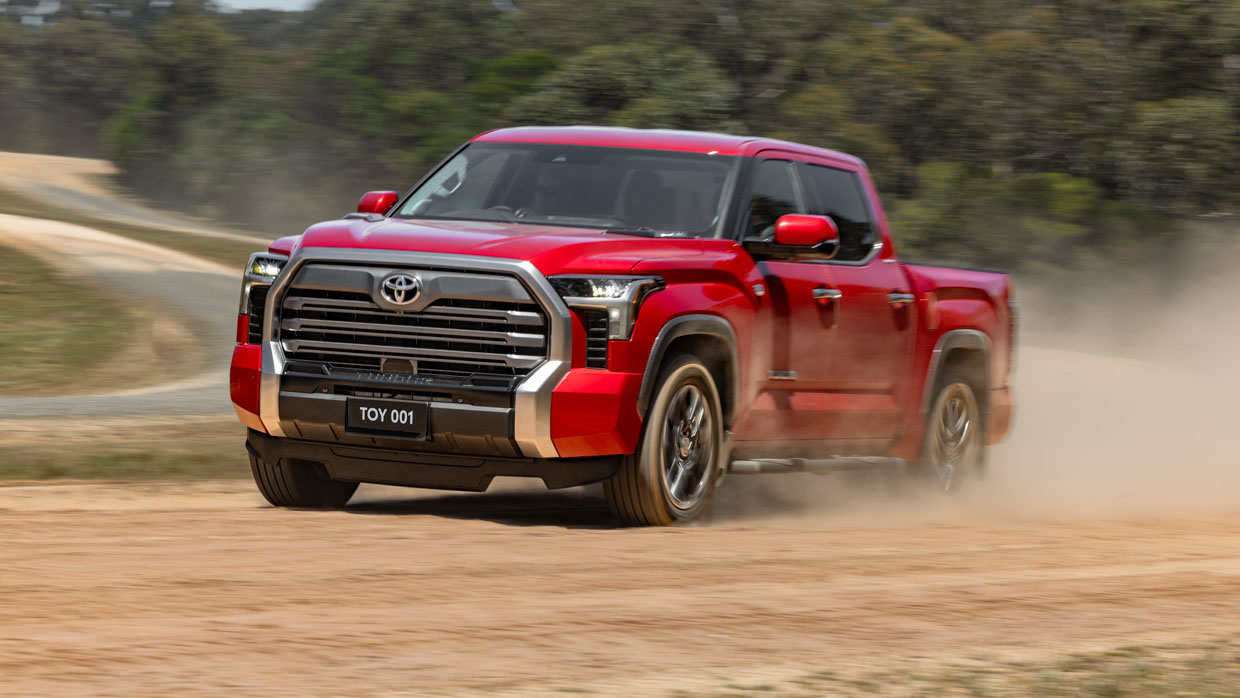
If American 0-100km/h tests of around 6.5 sec are accurate, the Tundra V6 hybrid is comfortably quicker than similar Toyotas. For reference, Chasing Cars has recently recorded 0-100km/h times of 8.78 sec for the Hilux GR Sport four-cylinder diesel and 8.16 sec for the Land Cruiser 300 Series Sahara V6 diesel.
The transmission is a 10-speed automatic with torque converter that behaves itself and keeps the revs low. If you associate hybrid engines with whining CVTs, the standard auto-box is a revelation.
The proving ground contained a high speed dirt road which showcased some of the tuning of the Tundra’s vehicle stability control which provided enough leeway to pitch and turn in effectively but not enough to get yourself into trouble.
However, this terrain also uncovered a weakness in the specification of the Tundra: unlike the Land Cruiser 300 Series, the Tundra’s 4WD system is part-time. It’s hard to see this as anything other than a misstep given the power on offer.
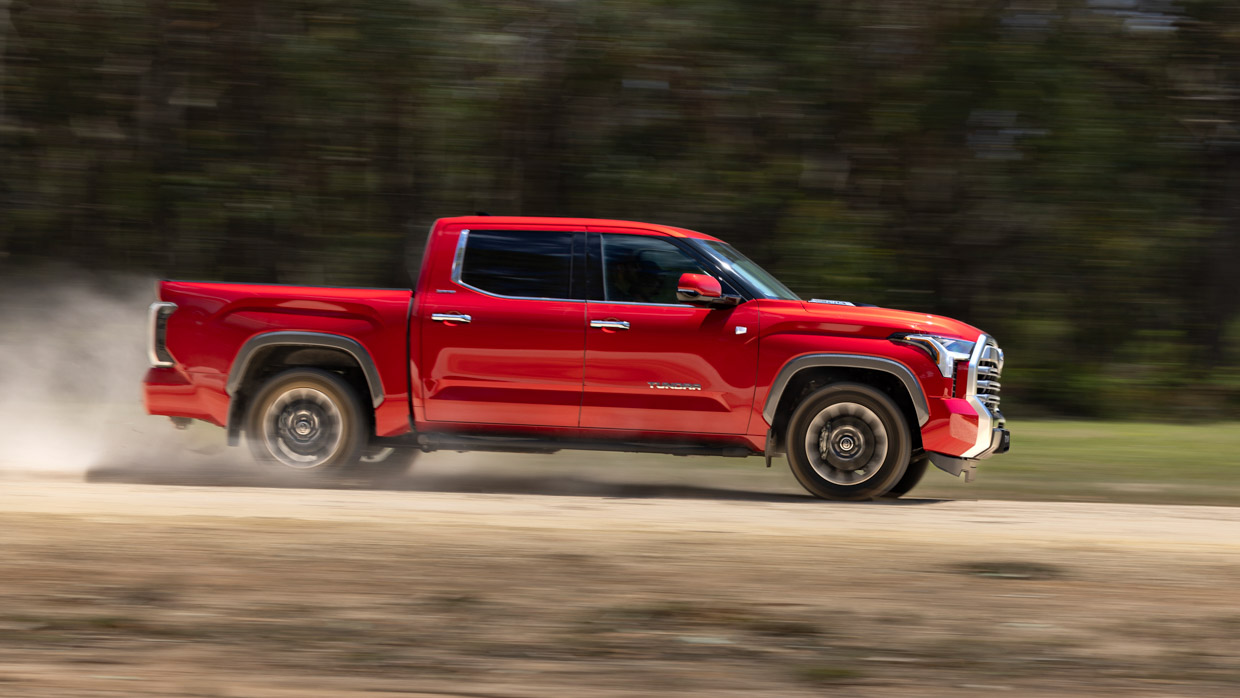
Drivers can flick between RWD and 4WD on the move at speeds of up to 80km/h but it’s not the ‘set and forget’ system that it should be in a sophisticated, expensive truck like this. Ram, for example, offers a full-time 4WD system on the majority of its range.
While I did drive the Tundra on gravel, Toyota did not grant an opportunity to try any real off-roading. Brand executives were upfront about this, explaining that the Tundra is intended to be an “on-road towing vehicle”. Frankly, the Tundra would be uncomfortably wide on many Australian fire trails.
Even still, this is the 4×4 version with a low-range transfer case and locking rear diff if you need it. For those interested, the ground clearance is claimed to be 216mm while the approach and departure angles are 23 and 21 degrees respectively. A breakover angle was not stated by Toyota.
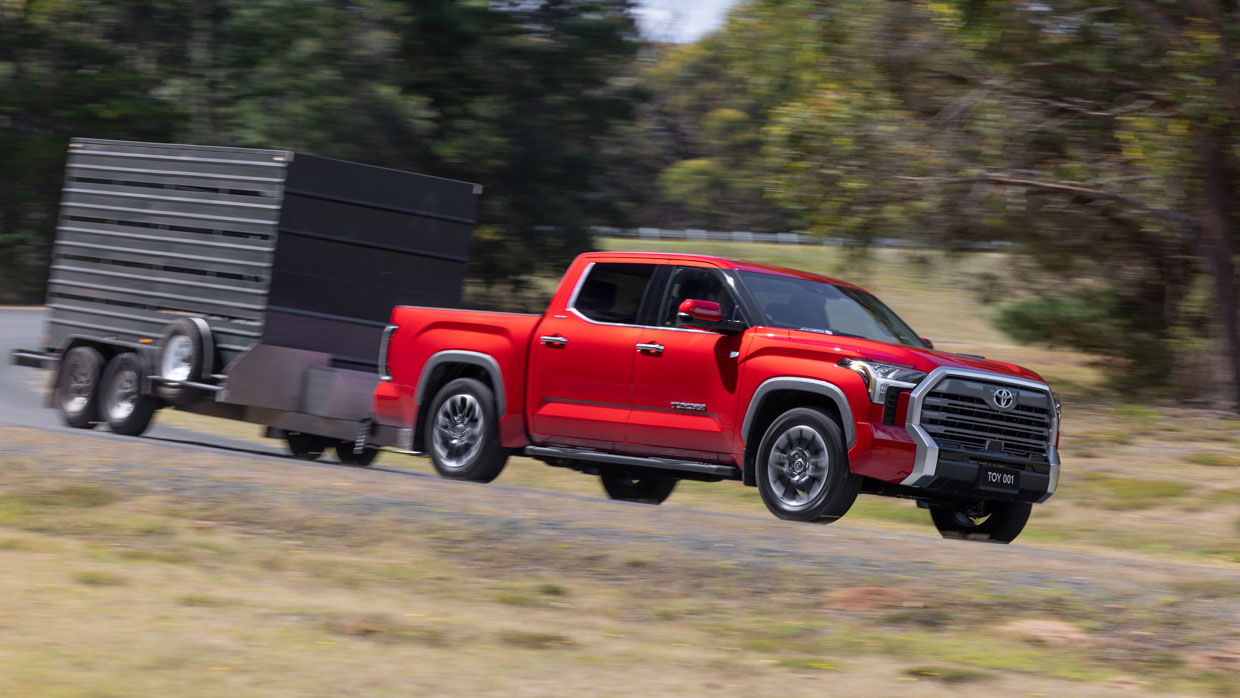
On to the topic of towing.
We sampled the Tundra with, first, a 3.5-tonne trailer and, second, a heavier 4.5-tonne trailer with two to three people in the tow vehicle. Interestingly, the Tundra is rated to tow roughly 5.2-tonnes in the US but Toyota scaled it down to 4.5-tonnes in Aus so that holders of a regular car licence can drive the vehicle.
In terms of important numbers, the Tundra Limited has a GVM of 3536kg and a GCM of 7825kg.
With 790Nm of torque available – 250Nm instantly thanks to the electric motor – the Tundra felt confident pulling both weights, even when pulling the maximum load from a dead stop at the bottom of a hill as we did – a recreation of having momentum ruined by mid-ascent road works.
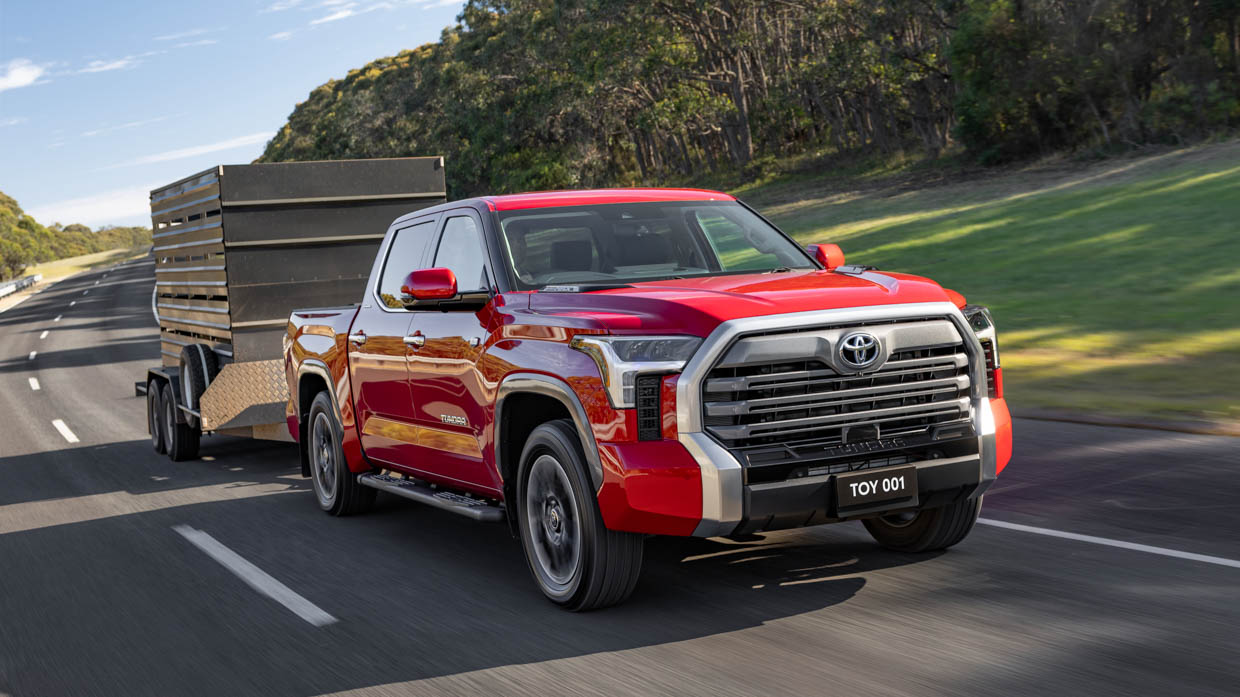
What’s more, with its huge 3700mm wheelbase – 850mm longer than the 300 Series – and high weight, its ability to control the trailer load over uneven terrain was commendable.
The Tundra is the first Toyota to fit an integrated brake controller from the factory in Australia, technology which is set to trickle down to the rest of the Toyota range in time. The brakes themselves are ventilated discs, which should aid heat dissipation, with four-piston callipers up front.
In the States but not locally (as yet), Toyota offers rear air suspension to help raise the height of the rear axle underload though we didn’t notice any significant drop. In saying that, we had nothing in the tray at the time and Toyota has said air ride could come to the eventual Australian spec.
After testing a range-topping Hilux GR Sport a few weeks before my Tundra drive, I found it difficult to accept that these two utes come from the same brand.
In truth, they barely do: there is quite a chasm between the product planning priorities of Toyota of America and Toyota Motor Company Australia. The Americans like their Toyotas big, plush and powerful, while Australia’s Hilux remains comparatively agricultural.
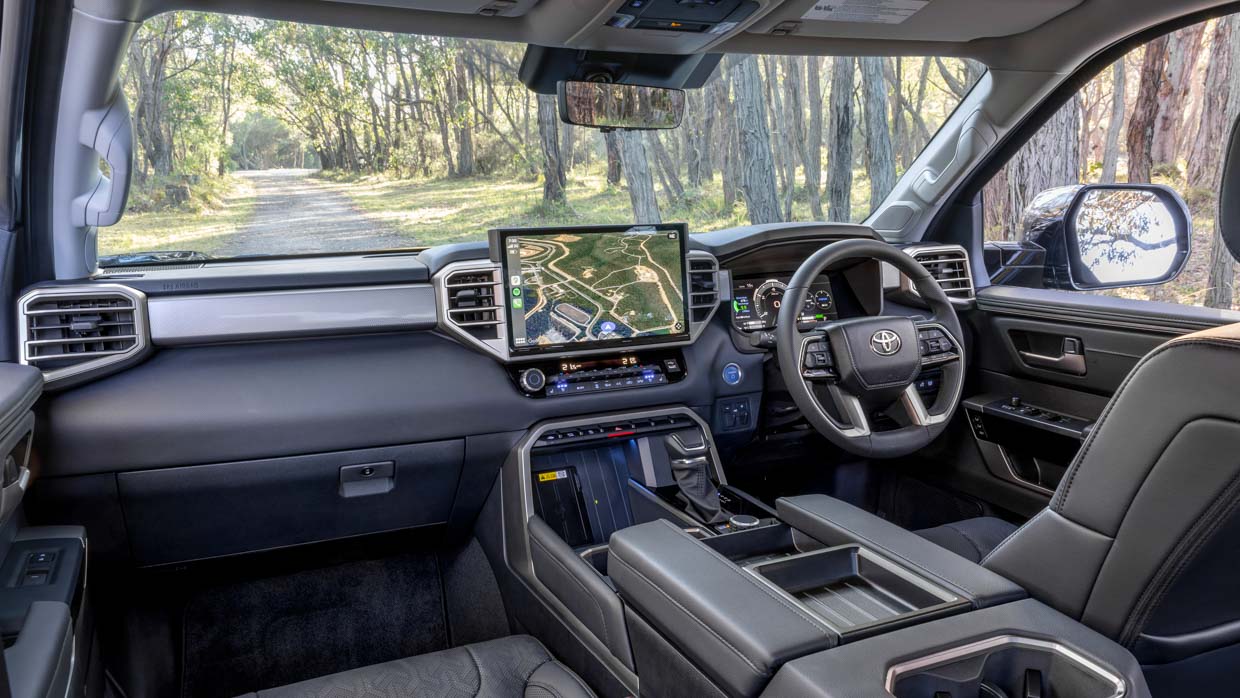
Naturally, the American market’s desire for bigger, better trucks does come with a cost. While a top-shelf Hilux is a $79,000 (driveaway) proposition, the remanufactured, right-hand drive Tundra Limited is likely to cost much more.
Even though the Tundra Limited costs precisely AUD$79,000 if you buy a left-hand drive version in the United States today, the Australian subassembly won’t come cheap should these utes be approved by Toyota for local sales.
A possible guide is Ford’s similarly remanufactured F-150 which can be driven away in Australia from $117,000 for a more basic XLT variant or around $150,000 for the Tundra Limited-rivalling Lariat grade.
So with a figure towards $150K in mind, the Tundra’s interior feels reasonably complete – but there is no avoiding that such a price is a lot of coin for a non-luxury vehicle.
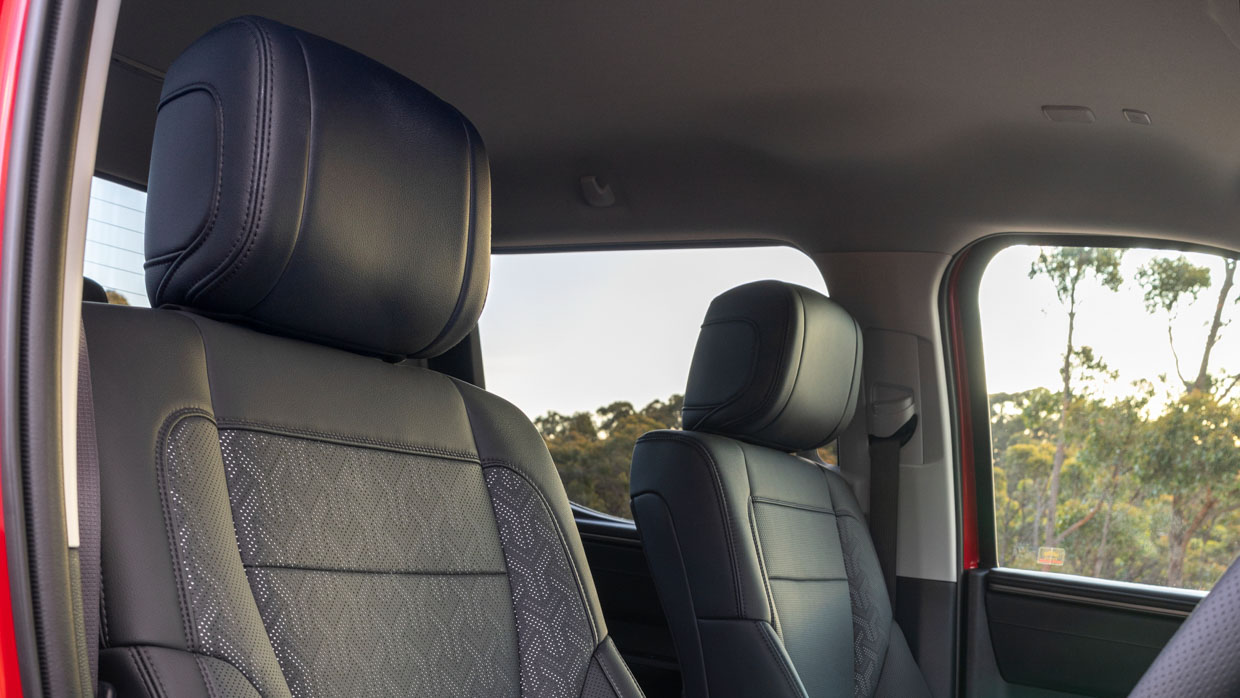
It’s hard to tell if the Tundra is built as well as the Japanese-built 300 Series Land Cruiser without comparing the two back to back, but a decent shake of all the crucial components on the test course revealed no overt sloppiness, squeaks or rattles.
Australians familiar with midsize utes will be shocked by the width of the Tundra, with the 185mm-girthier body creating room for broad seats designed to accommodate the big and tall.
The centre console is vast, giving occupants room to lounge like they simply cannot in your typical midsize ute.
It’s hard to miss the centre piece though, sitting proud at 14.0-inches, the touchscreen is capacious and should be great for maps on long trips. Apple CarPlay is wireless but Android Auto still requires a cable.
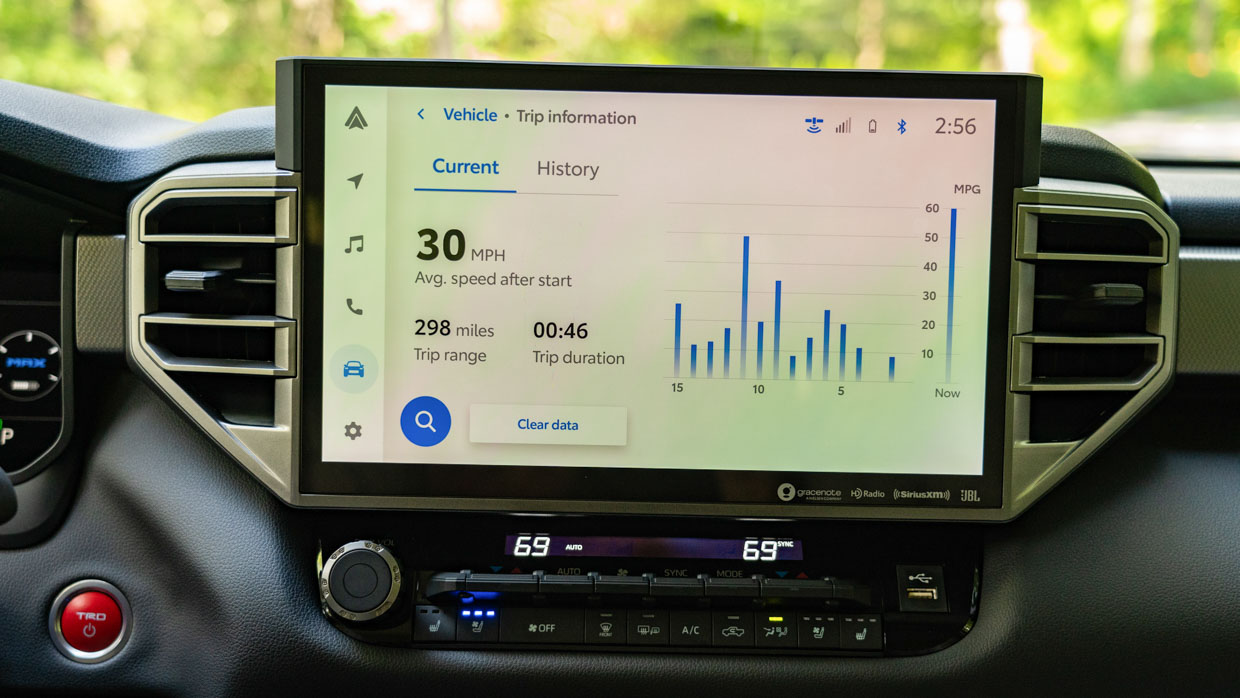
Pictured: the US market Tundra Limited
Physical climate control buttons and knobs sit further below, just above the shifter and the vertical wireless phone charger.
Given that the Limited sits towards the middle of America’s Tundra range, buyers might also be surprised to hear that other features such as a 12.3-inch digital driver’s display along with heated and cooled front seats also come as standard fit.
Ventilated chairs are a smart addition for our hot country, though the front pews might be overly soft and wide for some drivers. That said, they feature enough electronic adjustment and built in structure to help your body feel properly supported.
With its expected price point, it’s disappointing to see that the seats are synthetic vinyl, not genuine leather, though I’ve certainly felt worse material in my time.
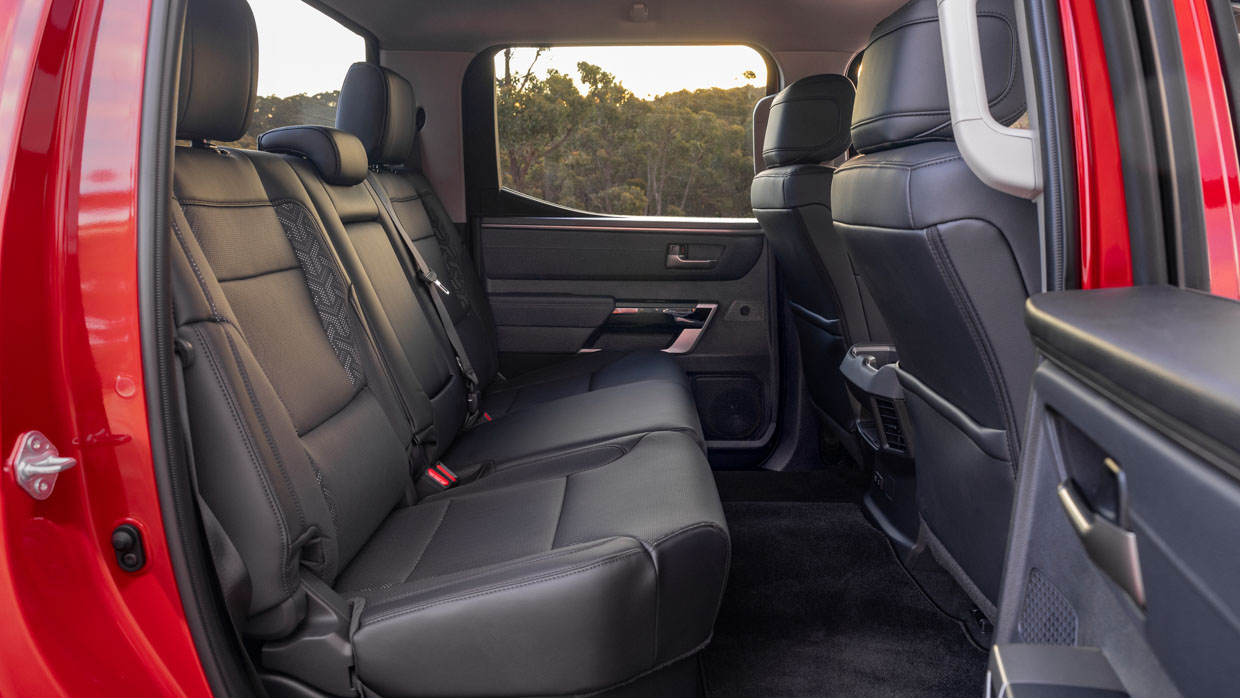
As to how these seats stack up after some long hours in the saddle? That remains to be seen as we never drove the vehicle for more than 30 minutes at a time.
A brief test of the 12-speaker, 1200-watt JBL sound system showed the system to be good enough for the task at hand.
Being the larger crew-cab body style, the Tundra features acres of room in the second row, enough to accommodate three six-foot adults if needed, though the one in the centre will have to deal with an overly firm seat base.
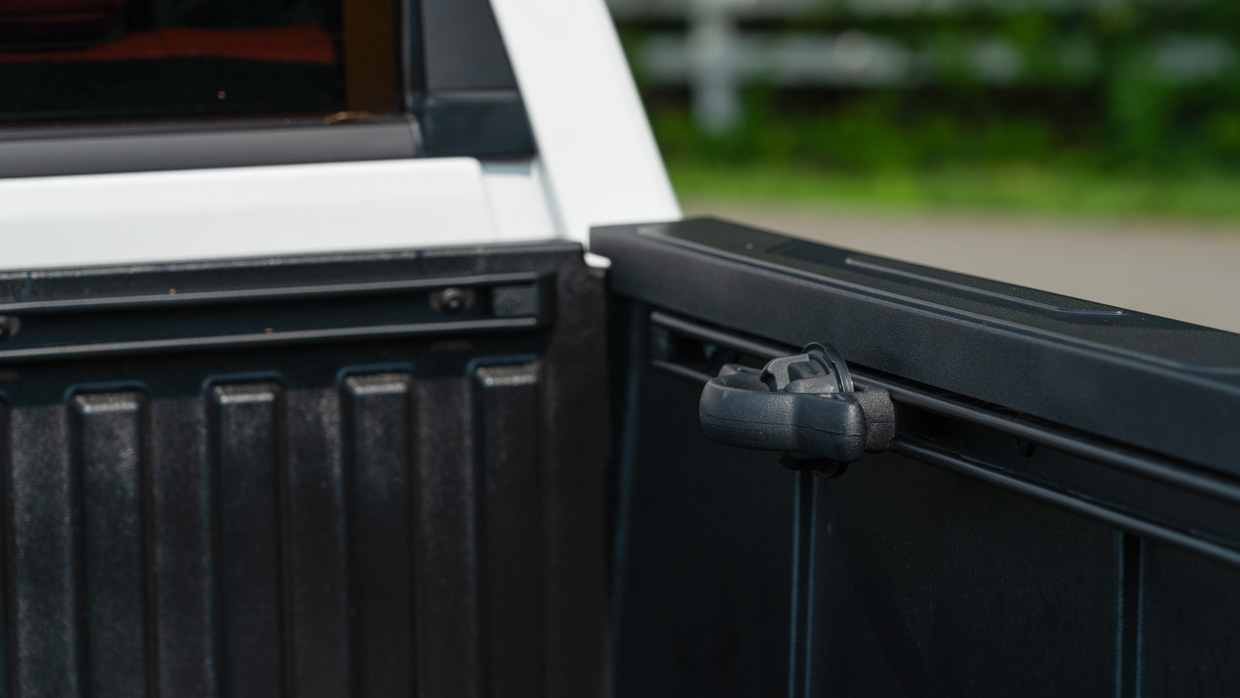
Pictured: the US market Tundra TRD Pro
Some of the plush materials in the front row revert to the hardier and scratchier in the second but the outboard seats are nice and comfortable, plus there should be enough room to easily fit a baby capsule without much or any space compromise to the front row.
Equipped with the smallest, 5.5 foot (1670mm) tray, the Tundra may not be as flexible as some midsize utes, with a payload rating of 758kg – down on a Hilux SR5 auto which quotes 940kg – though this isn’t uncommon for this plus-sized class of ute, with the Silverado 1500 LTZ Premium (757kg) and Ram 1500 Larmie Sport (779kg) in similar territory.
The bed features eight tie-down points with two on each side able to be moved via a clever rail system. Disappointingly, the Tundra does not include a tonneau cover of any kind.
Considering that the Tundra isn’t officially on sale in Australia, an ANCAP rating is unlikely to appear soon.
In the United States, however, the Tundra was one of only two full-size utes along with the fully-electric Rivian R1T to be branded a ‘Top Safety Pick+’ by the Insurance Institute for Highway Safety (IIHS) in 2023.
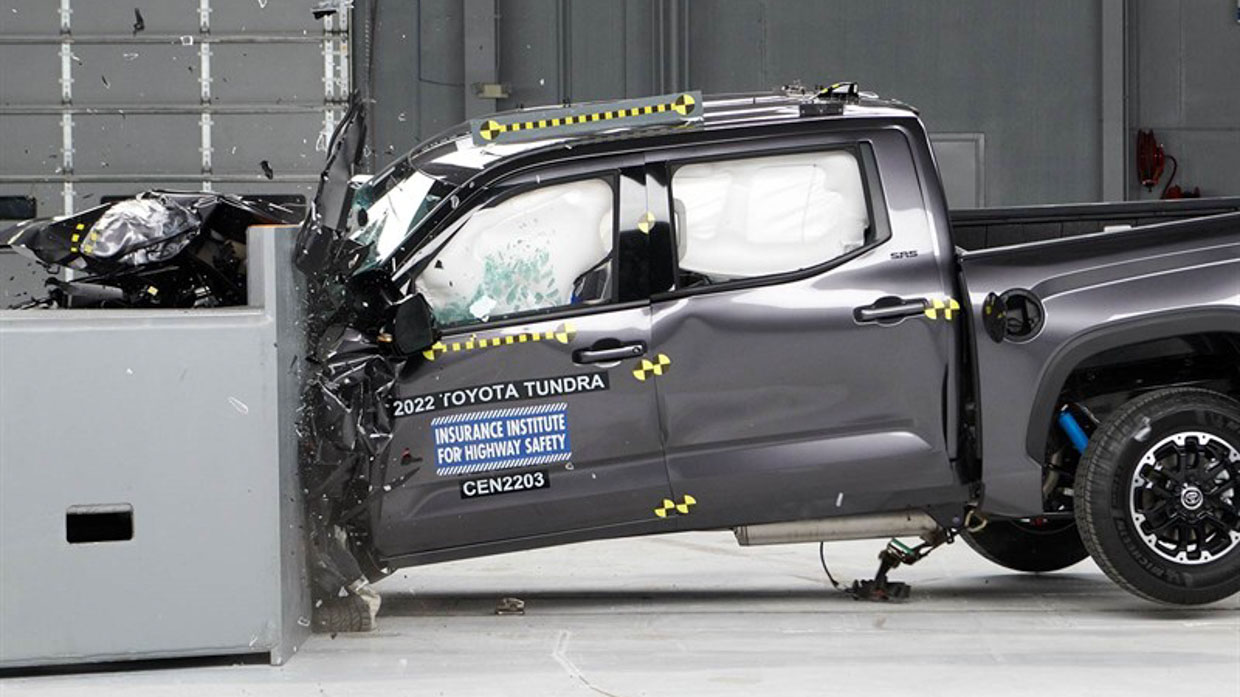
Pictured: IIHS crash testing in America
In Australia, the following features are equipped on the 300 leased Tundras:
In our brief testing at the private test facility, the safety features such as the lane keep assist were found to be fairly well tuned, but further testing on Australian roads is required for a proper evaluation.
Aussies who are chosen to take part in the Tundra’s testing program will be placed on an all-inclusive lease agreement, with servicing, road-side assist, tyre replacement, insurance and registration included in a single cost.
That cost is $2500 per month, and Toyota says it is heavily subsidising this figure due to the feedback the brand is demanding from participating drivers.
Servicing intervals are every six-months or 10,000km, which is identical to the Land Cruiser 300 Series. Due to the all-inclusive nature of the lease, services are included in the total cost.
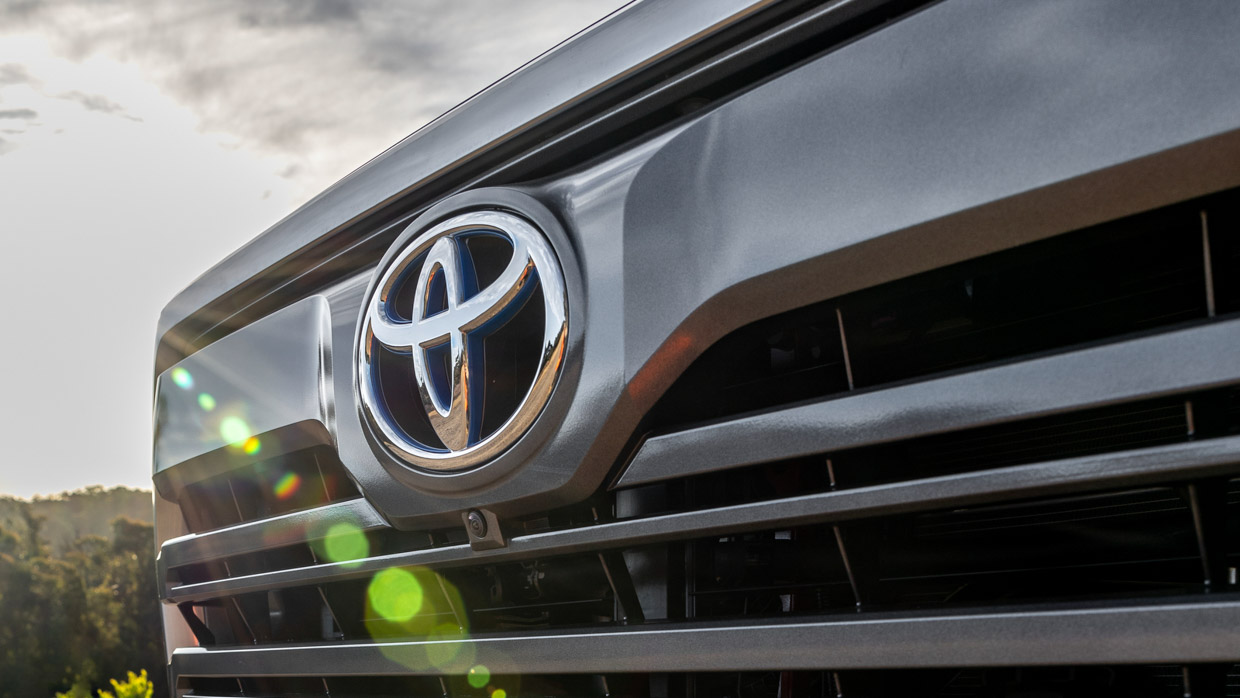
Toyota did not provide any official fuel consumption figures though one executive did speculate that it would be more frugal than its rivals in the real world; perhaps not surprising given that it’s the first brand to bring a proper hybrid system to the full-size ute segment.
On a long trip around Australia, even 1L/100km difference could add up to hundreds of dollars saved, so it’s certainly a claim worth investigating. The big six does require 95 octane petrol, however.
In America, where fuel efficiency testing is fairly accurate, the Tundra hybrid quotes a consumption of up to 12.3L/100km in urban conditions and 10.7L/100km on the highway.
With the 122-litre tank on board, that gives the Tundra a theoretical highway range of 1140km.
It’s difficult to assess a vehicle without having a definitive price to provide holistic context, but having spent the last month or so sampling some of Toyota’s flagship 4×4 hardware, it’s clear that some Toyota buyers are willing to invest a considerable sum to attain a vehicle that ticks all the right boxes.
Seriously expensive 70 Series builds are a common sight on Australian roads and prove this point – and that’s before you calculate what some Aussies pay to convert a 300 Series into an ultimate double-cab ute…
An early glance of the Toyota Tundra owners groups reveals a swath of individuals seemingly smitten with their pick-up truck and I can see why.

In the United States, the Tundra is reportedly overlooked by a section of the truck-buying public due to strong domestic allegiances, but here in Australia where Toyota’s brand loyalty is incredibly strong, this full-size pickup could gain traction.
It is positive to finally see some real innovation in the ute segment locally, with Toyota the first to introduce a proper hybrid system in a class of vehicle that contributes much more than its fair share of emissions.
Ultimately, the Tundra we tested is still a pre-production ute but the signs here are encouraging, not just in terms of the vehicle itself but also the conversion process. Those few hundred Aussies chosen for the Tundra program are in for a treat.
About Chasing cars
Chasing Cars reviews are 100% independent.
Because we are powered by Budget Direct Insurance, we don’t receive advertising or sales revenue from car manufacturers.
We’re truly independent – giving you Australia’s best car reviews.
The estimate provided does not take into account your personal circumstances but is intended to give a general indication of the cost of insurance, in order to obtain a complete quote, please visit www.budgetdirect.com.au. Estimate includes 15%^ online discount.
^Conditions Apply
Budget Direct Insurance arranged by Auto & General Services Pty Ltd ACN 003 617 909(AGS) AFSL 241 411, for and on behalf of the insurer, Auto & General Insurance Company Limited(ABN 42 111 586 353, AFSL 285 571).Because we don’t know your financial needs, we can’t advise you if this insurance will suit you. You should consider your needs and the Product Disclosure Statement before making a decision to buy insurance. Terms and conditions apply.
Indicative quote based on assumptions including postcode , 40 year old male with no offences, licence suspensions or claims in the last 5 years, a NCD Rating 1 and no younger drivers listed. White car, driven up to 10,000kms a year, unfinanced, with no modifications, factory options and/or non-standard accessories, private use only and garaged at night.
^Online Discounts Terms & Conditions
1. Discounts apply to the premium paid for a new Budget Direct Gold Comprehensive Car Insurance, Third Party Property Only or Third Party Property, Fire & Theft Insurance policy initiated online on or after 29 March 2017. Discounts do not apply to optional Roadside Assistance.
2. Discounts do not apply to any renewal offer of insurance.
3. Discounts only apply to the insurance portion of the premium. Discounts are applied before government charges, taxes, levies and fees, including instalment processing fees (as applicable). The full extent of discounts may therefore be impacted.
4. We reserve the right to change the offer without notice.